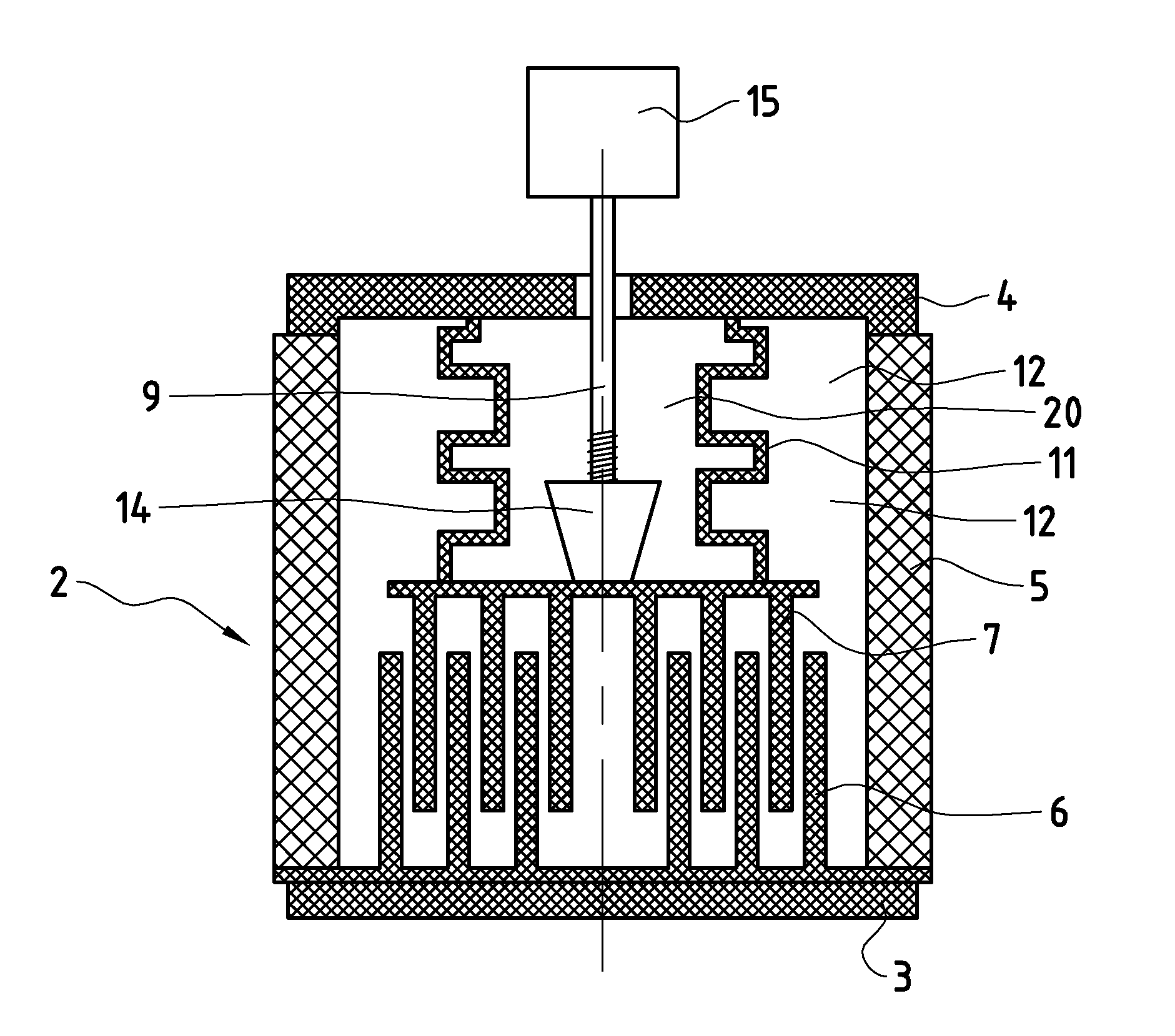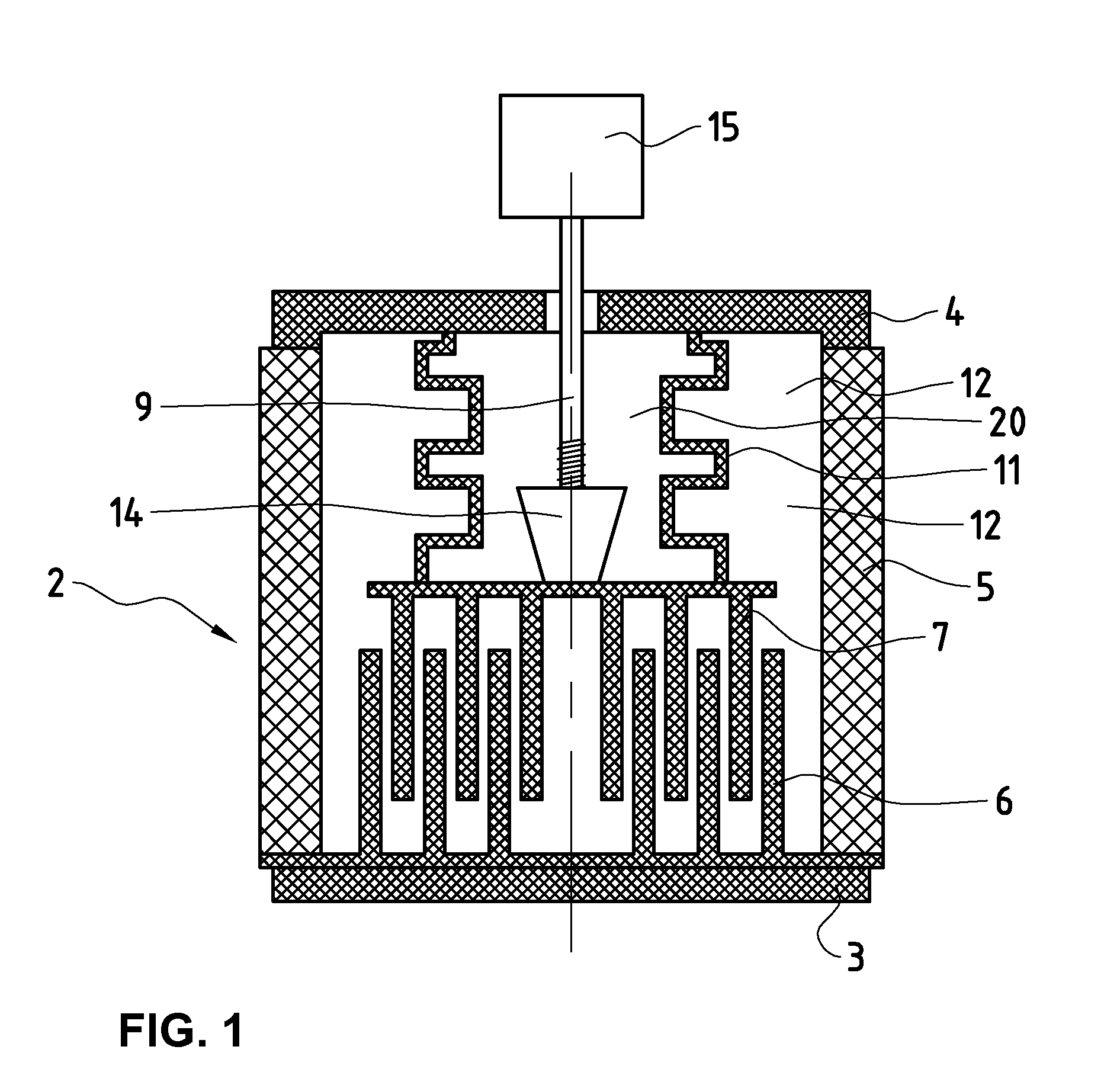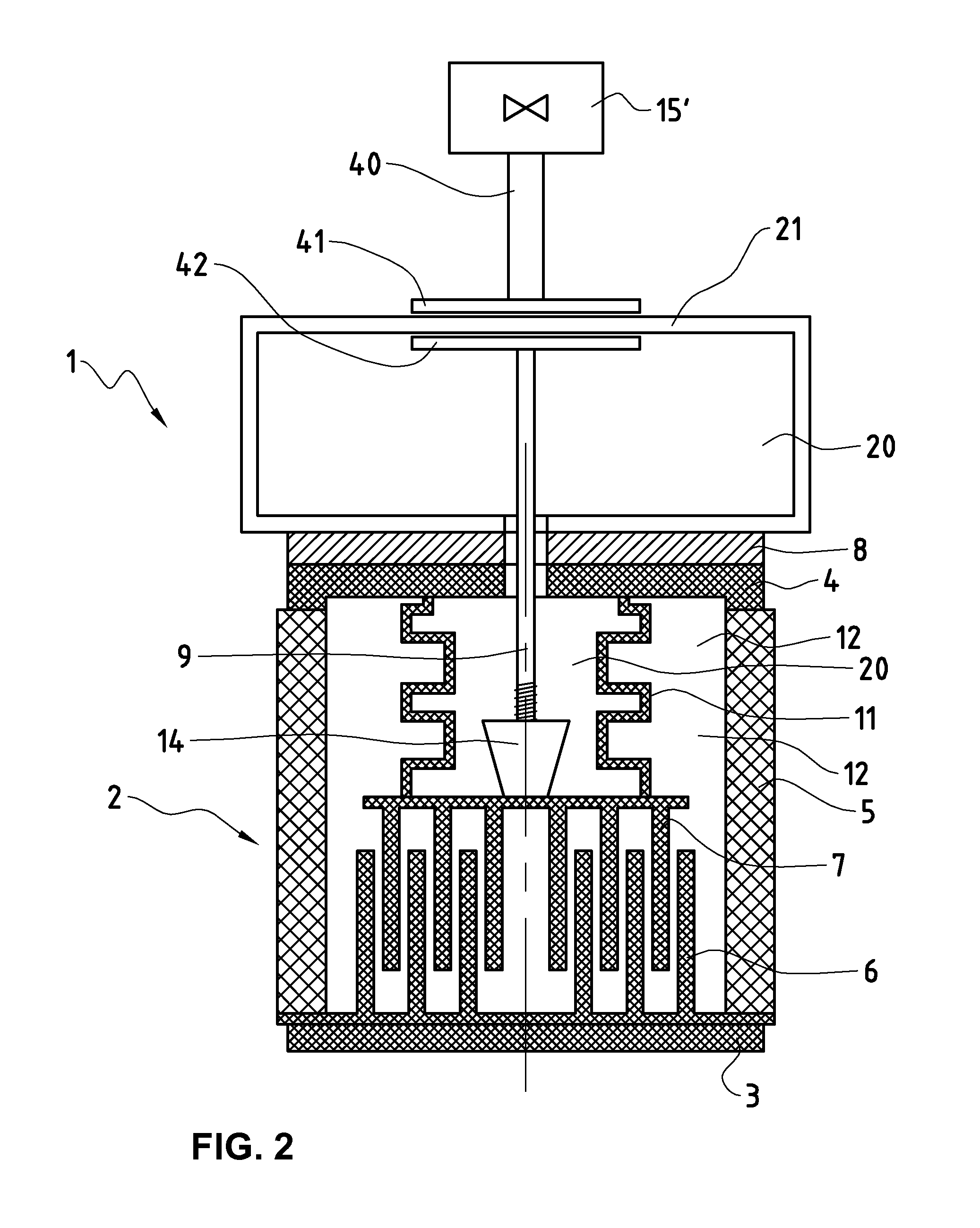Vacuum variable capacitor
a variable capacitor and vacuum technology, applied in variable capacitors, capacitors with electrode area variation, air/gas/vacuum dielectric ipc5, etc., can solve the problems of unrivaled power applications, inability to deliver electric power, and destruction, so as to reduce the required motor torque, reduce the required vacuum force, and reduce the effect of vacuum for
- Summary
- Abstract
- Description
- Claims
- Application Information
AI Technical Summary
Benefits of technology
Problems solved by technology
Method used
Image
Examples
second embodiment
[0049]The collar (4) on the variable side of the vacuum variable capacitor (1) is often referred to as the “variable mounting plate”. It is used to mount the vacuum variable capacitor into an impedance matching network or other system. A different electrode arrangement inside the first vacuum tight enclosure (2) allows to simplify the mounting of the drive system, as will be explained in relation to the invention.
[0050]Coming back to the present embodiment (FIG. 2), let us assume that the pressure in the pre-vacuum enclosure (21) is 0.1 bar for the following discussion about the increase of the lifetime of the vacuum variable capacitor.
[0051]Firstly, the bellows (11) lifetime improves because the pressure differential (ΔP) across the bellows (11) is now reduced by 90%, and this reduction will produce lower membrane stress and lower bending stress of the bellows (11) in extension or compression, thus leading to an extended lifetime. Secondly, the lifetime of the screw (9) and nut (14...
third embodiment
[0064]With this arrangement, it is therefore particularly advantageous to use a linear drive or any other moving means which do not contain a screw and nut. Furthermore with this embodiment, the force necessary to adjust the vacuum variable capacitor is reduced even more than in the previously discussed embodiments, and even higher speeds can be achieved. A linear motor (34) outside the enclosures as drive means and a voice-coil (29) inside the pre-vacuum enclosure (21) as driven means, such as a linear induction or voice-coil type motor, can for example be used to adjust the vacuum variable capacitor of FIG. 4. Furthermore, because the nett vacuum and spring forces on the bellows are effectively reduced to zero, the capacitance adjustment speed does not depend on the pressure in the pre-vacuum enclosure (21). The pressure in the pre-vacuum enclosure (21) could thus be any value, including atmospheric pressure, or a higher-than-atmospheric pressure. Indeed, the vacuum variable capac...
fourth embodiment
[0065]FIG. 5 shows a further example of a vacuum variable capacitor according to the present invention. The general set up of the electrodes (6) and (7), the bellows (11), the lead screw (9) and the nut (14) of the capacitor is realized as shown in FIG. 2. In FIG. 5 the drive means (40) is housed in an enclosure (43) and supported by bearings (44). The magnetic plates (41) and (42) are realised as magnetic blocks in the enclosures (43) and (21) respectively. The magnets are chosen strong enough to guarantee a perfect orientational coupling of the blocks and the respective parts they are attached to in their respective enclosures (43) and (21). Any “slipping” of the two rotationally coupled systems should be avoided during movement and more critically during acceleration and deceleration.
[0066]The arrangement of the motor (15′) outside the vacuum enclosures of the vacuum variable capacitor allows a simple design of the capacitor with several vacuum enclosures and facilitates maintena...
PUM
 Login to View More
Login to View More Abstract
Description
Claims
Application Information
 Login to View More
Login to View More - R&D
- Intellectual Property
- Life Sciences
- Materials
- Tech Scout
- Unparalleled Data Quality
- Higher Quality Content
- 60% Fewer Hallucinations
Browse by: Latest US Patents, China's latest patents, Technical Efficacy Thesaurus, Application Domain, Technology Topic, Popular Technical Reports.
© 2025 PatSnap. All rights reserved.Legal|Privacy policy|Modern Slavery Act Transparency Statement|Sitemap|About US| Contact US: help@patsnap.com



